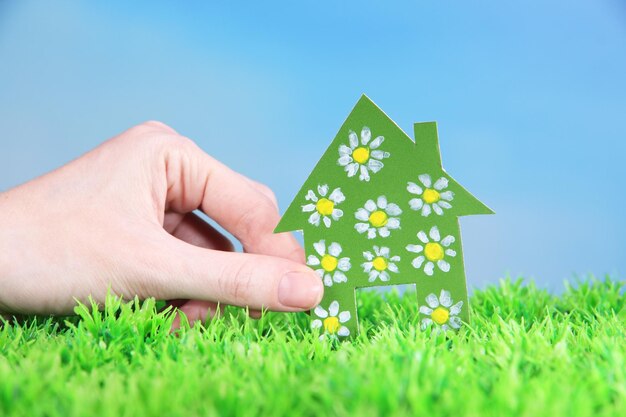Are you looking to make your home more eco-friendly while cutting down on energy bills? Green insulation might just be the perfect solution. As homes and buildings account for a significant portion of global energy use, the type of insulation you choose plays a crucial role in reducing your carbon footprint. By opting for sustainable insulation materials, you can minimize energy consumption, reduce greenhouse gas emissions, and contribute to a healthier planet.
This blog will explore how green insulation works, the benefits it offers, and how you can make the switch to more sustainable options.
The Environmental Impact of Traditional Insulation
If your home still uses conventional insulation, like fiberglass or foam, it could be increasing your carbon footprint more than you realize. While these materials are effective at keeping your home warm or cool, their production often involves significant energy use and harmful chemicals, both of which contribute to environmental degradation.
For example, traditional foam insulation is made with petroleum-based products, releasing carbon dioxide and other greenhouse gases during its manufacturing process. Additionally, it often ends up in landfills, where it can take hundreds of years to break down.
This is where green insulation comes in—a more sustainable answer to modern energy challenges.
How Green Insulation Works
Green insulation materials are designed to offer the same temperature regulation benefits as conventional insulation but with a noticeably lower environmental impact. These materials are sourced sustainably, manufactured with fewer carbon emissions, and are often biodegradable or recyclable at the end of their life cycle.
Key examples of green insulation materials include:
- Recycled Cotton or Denim: Made from post-consumer waste, like old jeans, this insulation material provides excellent thermal resistance.
- Sheep’s Wool: A renewable and biodegradable option, wool has natural moisture-wicking properties, making it resistant to mold.
- Cork: Prized for its durability and sustainability, cork is harvested from oak trees without harming them.
- Cellulose: One of the most popular eco-friendly insulations, it’s made from recycled paper and treated to be fire-resistant.
Not only do these materials help you stay comfortable all year round, but they also leave a much smaller carbon footprint than traditional options.
The Benefits of Green Insulation
Switching to green insulation isn’t just good for the planet—it offers plenty of benefits for homeowners as well. Here’s why you should consider making the change.
1. Reduced Energy Consumption
Green insulation significantly enhances your home’s energy efficiency by preventing heat from escaping in the winter and keeping cool air in during the summer. This minimizes your need to use energy-intensive heating or cooling systems, lowering both your bills and carbon emissions.
2. Healthier Indoor Air Quality
Many conventional insulation materials release harmful volatile organic compounds (VOCs) over time, which can negatively impact indoor air quality and your health. Green insulation, on the other hand, is usually free from harmful chemicals, making it safer for your family.
3. Sustainable and Renewable Materials
By using organic or recycled materials, green insulation supports sustainability. Materials like wool or cellulose not only reduce waste but also require fewer resources to produce.
4. Long-Term Cost Savings
While installing eco-friendly insulation might carry a higher upfront cost, the long-term savings make it worth the investment. Lower energy bills and the durability of materials like cork or wool mean your insulation will pay for itself over time.
5. Reduce Landfill Waste
Many eco-friendly insulations are recyclable or biodegradable, meaning they won’t just end up in landfills at the end of their life cycle. This further reduces your home’s environmental footprint.
Making the Switch to Green Insulation
If you’re ready to make the change, here’s what you need to know about installing green insulation in your home.
Step 1: Evaluate Your Current Insulation
Before jumping into a complete overhaul, it’s important to assess what you already have. If your current insulation is underperforming or contains harmful materials, replacing it with green alternatives can make a significant difference.
Step 2: Find a Reliable Insulation Company
The next step is to work with a trusted provider who specializes in eco-friendly solutions. If you’re located in Utah, for instance, partnering with a professional insulation company in Provo ensures you get expert installation tailored to your home’s needs. Not only will they guide you to the best green materials, but they’ll also ensure the process is seamless and stress-free.
Step 3: Choose the Right Material for Your Home
Whether it’s recycled denim for an urban loft or sheep’s wool for a rustic cabin, the right insulation material depends on your climate, budget, and preferences. An insulation expert can help you determine what’s best suited for your home and lifestyle.
Step 4: Enjoy the Benefits
Once installed, you can start enjoying the benefits of energy efficiency, healthier air quality, and knowing you’ve made an environmentally conscious choice. Don’t forget to monitor your energy bills—they’re likely to be much lower!
Small Changes Lead to Big Results
Switching to a green insulation option is one of the simplest and most impactful ways to reduce your carbon footprint. By saving energy, cutting costs, and supporting sustainable practices, you’re making a decision that benefits both your family and the planet.








Leave a Reply